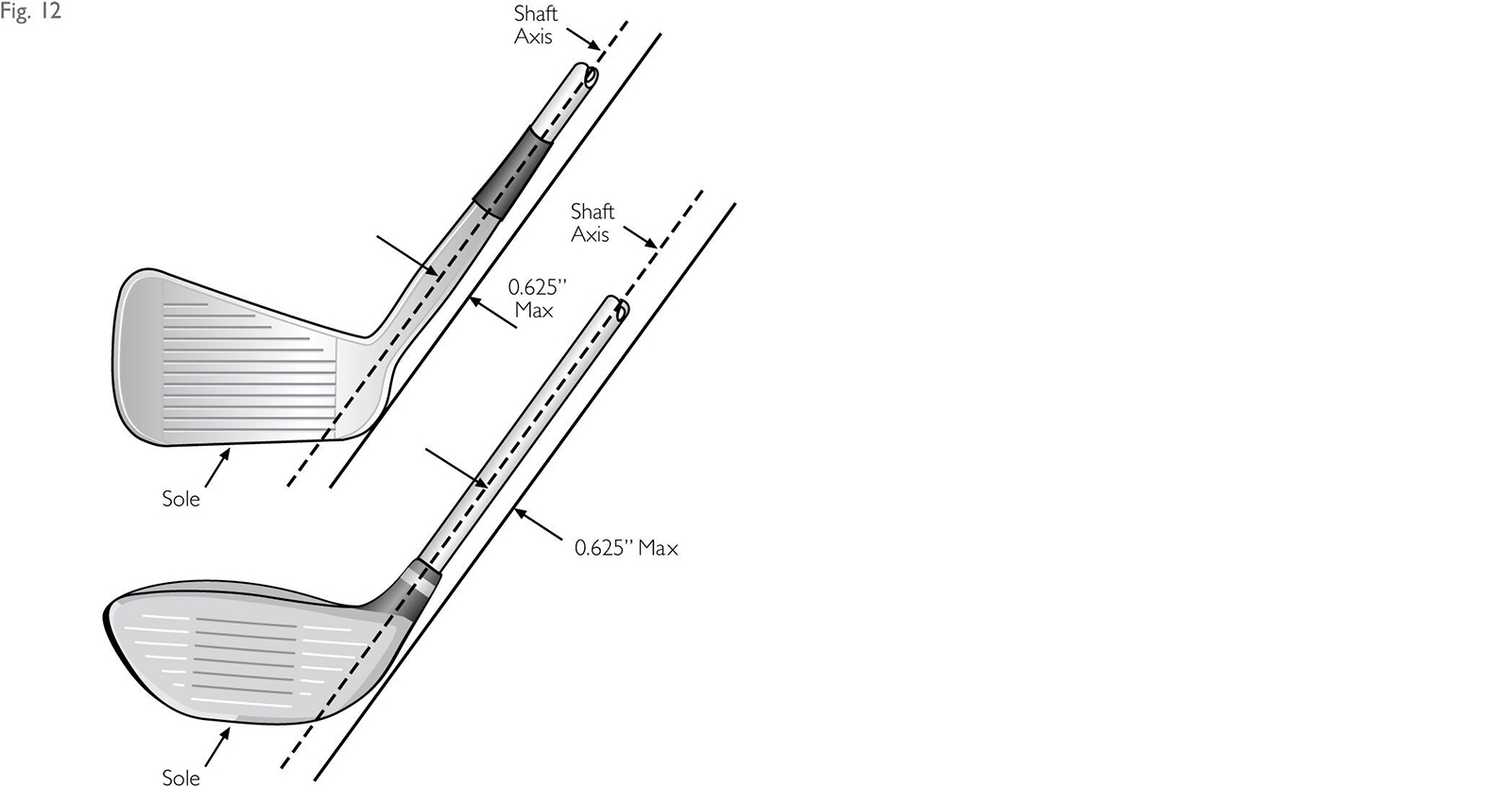1. Clubs
a. General
A club is an implement designed to be used for striking the ball and generally comes
in three forms: woods, irons and putters distinguished by shape and intended use.
A putter is a club with a loft not exceeding ten degrees designed primarily for use
on the putting green.
The club must not be substantially different from the traditional and customary form
and make. The club must be composed of a shaft and a head and it may also have material
added to the shaft to enable the player to obtain a firm hold (see Section 3 below).
All parts of the club must be fixed so that the club is one unit, and it must have
no external attachments. Exceptions may be made for attachments that do not affect
the performance of the club.
b. Adjustability
All clubs may incorporate features for weight adjustment. Other forms of adjustability
may also be permitted upon evaluation by The R&A or USGA. The following requirements
apply to all permissible methods of adjustment:
(i) the adjustment cannot be readily made;
(ii) all adjustable parts are firmly fixed and there is no reasonable likelihood of
them working loose during a round; and
(iii) all configurations of adjustment conform with the Rules.
During a round, a player must not make a stroke with a club when they have deliberately
changed that club's playing characteristics by adjustment or by any other means (see
Rule 4.1a(3) of the Rules of Golf).
c. Length
The overall length of the club must be at least 18 inches (0.457m) and, except for
putters, must not exceed 48 inches (1.219m).
For woods and irons, the measurement of length is taken when the club is lying on
a horizontal plane and the sole is set against a 60 degree plane as shown in Fig.
3. The length is defined as the distance from the point of the intersection between
the two planes to the top of the grip. For putters, the measurement of length is taken
from the top of the grip along the axis of the shaft or a straight line extension
of it to the sole of the club.

d. Alignment
When the club is in its normal address position the shaft must be so aligned that:
(i) the projection of the straight part of the shaft on to the vertical plane through
the toe and heel must diverge from the vertical by at least 10 degrees (see Fig. 5).
If the overall design of the club is such that the player can effectively use the
club in a vertical or close-to-vertical position, the shaft may be required to diverge
from the vertical in this plane by as much as 25 degrees;
(ii) the projection of the straight part of the shaft on to the vertical plane along
the intended line of play must not diverge from the vertical by more than 20 degrees
forwards or 10 degrees backwards (see Fig. 6).
Except for putters, all of the heel portion of the club must lie within 0.625 inches
(15.88 mm) of the plane containing the axis of the straight part of the shaft and
the intended (horizontal) line of play (see Fig. 12).




